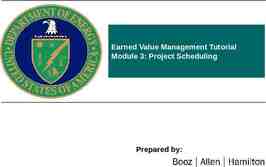Chapter 6 Financing and Reimbursement Methods
64 Slides1.22 MB

Chapter 6 Financing and Reimbursement Methods

Introduction Financing is: – Any mechanism that gives people the ability to pay for health care services. In most cases, financing is necessary to have access to health care. 2010 Jones and Bartlett Publishers

Introduction Sources of financing health care: Private health insurance Public insurance programs such as Medicare and Medicaid Uncompensated or charity care

Introduction Complexity of financing: –Many payers –Many plans –Many programs –Many payment options 2010 Jones and Bartlett Publishers

Introduction Economic perspective of financing: Working Americans finance their own health care and subsidize it for those who cannot afford it. Employer-paid insurance is an exchange for more salary. Taxes support public programs.

Effects of Financing and Insurance Demand for services Moral hazard (excessive demand) Covered services expand rapidly Growth of medical technology Provider-induced demand End results: 1. Increased health care expenditures. 2. Some resources are wasted. 2010 Jones and Bartlett Publishers

Insurance: Its Nature and Purpose Insurance A mechanism to protect against risk. Risk The possibility of substantial financial loss from some event.

Insurance: Its Nature and Purpose Insured (enrollee or beneficiary) An individual protected by insurance. Insurer An insurance agency that assumes the risk. Underwriting Evaluates, selects/rejects, classifies, and rates risk.

Insurance: Its Nature and Purpose Premium –Amount charged by the insurer to provide coverage. –Cost sharing by employers and employees.

Insurance: Its Nature and Purpose Four Principles of Insurance: 1) Risk is unpredictable for individuals. 2) Risk can be predicted with some a large group. accuracy for 3) Insurance can shift risk from the individual to the group by pooling resources. 4) Losses are shared by all members.

Insurance: Its Nature and Purpose Cost Sharing – Insurance requires some type of cost sharing. – The insured assumes at least part of the risk. – The purpose of cost sharing is to reduce misuse of insurance benefits.

Insurance: Its Nature and Purpose Cost Sharing There are three main types of cost sharing in private health insurance: Premium cost sharing Deductibles Copayments

Insurance: Its Nature and Purpose Cost Sharing – Deductibles Amount the insured pays first before benefits are paid by the plan Paid annually – Copayment Money paid out-of-pocket each time health services are received % share is referred to as coinsurance 2010 Jones and Bartlett Publishers

Insurance: Its Nature and Purpose Stop loss Limits total out-of-pocket costs. Findings of the Rand Health Insurance Experiment in the 1970s.

Private Insurance In 2011, 60% of employers offered health insurance. Employers characteristic associated with high health insurance offer rates. 2010 Jones and Bartlett Publishers

Private Insurance Five main types: 1. Group insurance 2. Self-insurance 3. Individual private insurance 4. Managed care plans 5. High-deductible health plans

Types of Private Insurance Group insurance – Offered through an employer, a union, or professional organization. – Anticipates large numbers of people in a group will buy insurance through a sponsor. – Cost and risk are distributed equally among the insured.

Types of Private Insurance Self-insurance Large employers’ workforces are large and diversified enough. They can predict their own medical experience. They can assume risk and pay all claims. High losses covered through reinsurance. 2010 Jones and Bartlett Publishers

Types of Private Insurance Individual Private Health Insurance For those who do not have group coverage Farmers Early retirees Self-employed individuals Risk is individually determined. High-risk people are often unable to get insurance. 2010 Jones and Bartlett Publishers

Types of Private Insurance Managed Care Plans Managed Care Organizations (MCO) consist of: Health Maintenance Organizations (HMO) Preferred Provider Organizations (PPO) They assume the risk in exchange for an insurance premium. They assume the responsibility for obtaining health care services by contracting with providers. 2010 Jones and Bartlett Publishers

Types of Private Insurance High-Deductible Health Plans (HDHPs) Two main types: HDHP/HRA HDHP is combined with a health reimbursement arrangement. Employer-financed account. Tax exempt payments made for qualified medical expenses.

Types of Private Insurance HDHP/HSA HDHP is combined with a health savings account. Mainly employee financed on a tax-deductible basis. 2010 Jones and Bartlett Publishers

Public Insurance Government financing Covered 31% of Americans in 2010 Categorical programs – benefits are designed for defined categories of people

Public Insurance Three main public health insurance programs: 1. Medicare 2. Medicaid 3. Children’s Health Insurance Program (CHIP) 2010 Jones and Bartlett Publishers

Public Financing Medicare Title 18 of Social Security Act An entitlement program People contribute through taxes and are entitled regardless of income and assets. A federal program Administered by CMS, an agency under the U.S. Department of Health and Human Services (DHHS)

Public Financing Medicare –Finances medical care for: 1) Those 65 years or older 2) Disabled people who are entitled to Social Security benefits 3) Those with end-stage renal disease

Medicare Public Financing The program does not offer comprehensive coverage Noncovered services: Vision Eyeglasses Dental care Hearing aids Many long-term care services 2010 Jones and Bartlett Publishers

Public Financing Medicare Medigap: Private insurance used to cover gaps in Medicare. Medicare has four parts.

Public Financing Medicare Hospital insurance (Part A) Financed by payroll taxes Medicare tax: Paid by all working individuals. Paid on all income earned. Paid equally by both employer and employee.

Public Financing Medicare Hospital insurance (Part A) Covers: Inpatient services, Short-term convalescence and rehabilitation in a skilled nursing facility (SNF), Home health Hospice 2010 Jones and Bartlett Publishers

2010 Jones and Bartlett Publishers

Medicare Public Financing Hospital insurance (Part A) The timing of benefits is determined by a benefit period. It begins on the day a beneficiary is hospitalized. It ends when the beneficiary has not been in a hospital or a skilled nursing facility for 60 consecutive days. Thereafter, a new benefit period begins. A beneficiary can have unlimited benefit periods. 2010 Jones and Bartlett Publishers

Public Financing Medicare Hospital insurance (Part A) Hospital benefits: Deductible is paid for the first 60 days. Copayment required from 61 to 90 days. Higher copayment required after 90 days and reserve days must be used. 2010 Jones and Bartlett Publishers

Public Financing Medicare Hospital insurance (Part A) (cont.) SNF benefits: Eligibility begins after 3 consecutive days of hospital stay. 100 days maximum in SNF. First 20 days at no charge to the beneficiary; copayment applies from day 21.

Public Financing Medicare Hospital insurance (Part A) Home health benefit Patient must be homebound, and Require intermittent or part-time skilled nursing care or rehabilitation care. Hospice benefit Patient must be terminally ill. Only a token copayment is required. 2010 Jones and Bartlett Publishers

Public Financing Medicare Supplementary Medical Insurance (SMI) – Part B Covers: Physician services Hospital outpatient services (surgery) Diagnostic tests Radiology, etc. 2010 Jones and Bartlett Publishers

Public Financing Supplementary Medical Insurance (SMI) – Part B (cont.) – Also covers certain screening and preventive services. – An Annual Wellness exam is provided for under the ACA of 2010 (no out-of-pocket costs are incurred) – For most services: » An annual deductible must be paid. » 80:20 coinsurance. 2010 Jones and Bartlett Publishers

Public Financing Medicare Advantage (Part C) – Does not specifically include additional medical benefits. – Beneficiaries are given the choice to remain in the original fee-for-service program, or sign up for Part C. – Additional benefits (basic vision and dental) may be offered by the private managed care plans. – Beneficiary receives all Part A, B, and D services through the MCO. 2010 Jones and Bartlett Publishers

Public Financing Medicare Prescription Drug Coverage (Part D) Created under the Medicare Prescription Drug, Improvement and Modernization Act (MMA) of 2003. Available to those who have Part A or B. Monthly premium must be paid. Annual deductible applies. Three layers based on spending. (Table 6.1) 2010 Jones and Bartlett Publishers

Public Financing Medicaid – Title 19 of Social Security Act – Finances health care for the indigent, but not all poor. – Jointly financed by state and federal governments. – Each state establishes its own eligibility criteria according to: Income and assets Medicaid is a means-tested program – Each state administers its own Medicaid program.

Children’s Health Insurance Program (CHIP) Title 21 of Social Security Act Available to families with incomes up to: 200% of federal poverty level. The ACA reauthorized CHIP through September 2015. States can use existing Medicaid, create a separate CHIP program, or use a combined approach. Federal and state funds finance the program.

The Patient Protection and Affordable Care Act (ACA) Mandates individuals to have health insurance, or pay a tax penalty. Employers with 50 or more employees are mandated to offer insurance coverage or pay a “free rider” tax. Medicaid is expanded to cover all people at or below 133% of the federal poverty level. 2010 Jones and Bartlett Publishers

The Patient Protection and Affordable Care Act (ACA) Mandate states to establish health insurance exchanges. Tax credit for small businesses with fewer than 25 workers. It is illegal to deny health insurance to people with preexisting medical conditions. 2010 Jones and Bartlett Publishers

The Patient Protection and Affordable Care Act (ACA) To cost at least 150 billion in 2016 Approx. 21 million will still be left uninsured

Reimbursement Methods Third-party payers Insurance companies, managed care organizations, BlueCross BlueShield, government Reimbursement Payment made by third-party payers to the providers of services.

Reimbursement Methods Fee-for-Service – Charges (prices) set by providers. – Each service is billed separately. – “Usual, customary, and reasonable” (UCR) became common. – Main drawback: Provider-induced demand

Reimbursement Methods Package pricing (bundled pricing) –Number of related services bundled in one price.

Reimbursement Methods Resource-Based Relative Value Scale (RBRVS) Medicare developed the program to reimburse physicians according to a “relative value” assigned to each service. Based on time, skill, intensity

Reimbursement Methods 1. Managed care approaches – Discounted fees – Used by PPOs – Capitation 1. Used by HMOs. 2. Per member per month (PMPM) fee to cover all needed services. 3. Prudent delivery of services. 4. Minimize provider-induced demand. 2010 Jones and Bartlett Publishers

Reimbursement Methods Retrospective reimbursement Rates are set after evaluating the costs retrospectively. Historical costs are used to determine the amount to be paid. Perverse incentives. 2010 Jones and Bartlett Publishers

Reimbursement Methods Prospective reimbursement Uses certain preestablished criteria to determine in advance the amount of reimbursement. 2010 Jones and Bartlett Publishers

Reimbursement Methods Prospective reimbursement Four main prospective reimbursement methods: Diagnosis Related Groups (DRG) Ambulatory Payment Classifications (APC) Resources Utilization Groups (RUG) Home Health Resources Group (HHRG) 2010 Jones and Bartlett Publishers

Reimbursement Methods Diagnosis-Related Groups (DRGs) – For acute hospital inpatients – Approximately 500 DRGs – Prospectively set bundled price according to the admitting diagnosis (DRG) – The hospital earns a profit by keeping costs below the DRG reimbursement – See example in Table 6.3 2010 Jones and Bartlett Publishers

2010 Jones and Bartlett Publishers

Reimbursement Methods Ambulatory Payment Classification (APC) Medicare’s Outpatient Prospective Payment System (OPPS) 300 procedure groups Reimbursement rates are associated with each APC group. A bundled rate to include: Anesthesia, drugs, supplies, recovery 2010 Jones and Bartlett Publishers

Reimbursement Methods Resource Utilization Groups (RUG) – A case-mix method to reimburse Skilled Nursing Facilities (SNF) Case mix: overall acuity level in a facility – Each patient is classified into one of 66 RUGs. – The case mix determines a fixed per-diem rate. The higher the case mix score, the higher the reimbursement. 2010 Jones and Bartlett Publishers

Reimbursement Methods Home Health Resource Groups (HHRG) – A fixed, pre-determined rate for each 60-day episode of care, regardless of services given. – OASIS is used to rate a patient’s functional status and clinical severity. – Assessment measures translate into points. – Total points determine the HHRG category.

National Health Expenditures Spending for all health services and related activities. Evaluated as a percentage of GDP and as amount spent per capita. 17.9% of GDP spent in 2010. Health care cost inflation is evaluated using the CPI. 2010 Jones and Bartlett Publishers

2010 Jones and Bartlett Publishers

National Health Expenditures In 2010, – 84% of total national health expenses were spent on: Personal health (i.e., hospital care, physician services, dental care, other professional services, nursing home care, home health care, prescription drugs, medical supplies, durable medical equipment, vision care) – Remaining 16% was spent on: Public Health services, research, structures and equipment, administrative services

Conclusion Financing plays a critical function in health care delivery. –It enables consumers to obtain health care services through insurance coverage. –For providers, it reimburses them for the services they provide.

Conclusion Methods of reimbursement changed from retrospective to prospective. Prospective payment and capitation used by HMOs contain incentives for the delivery of cost-effective health care.

Conclusion Financing is shared between private and public sources. – Government incurs approx. 45% of all health care expenditures in the United States. A quasi-national health care system. Public expenditure is expected to grow. substantially if ACA is implemented in 2014. 2010 Jones and Bartlett Publishers







